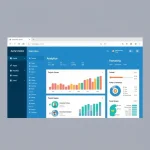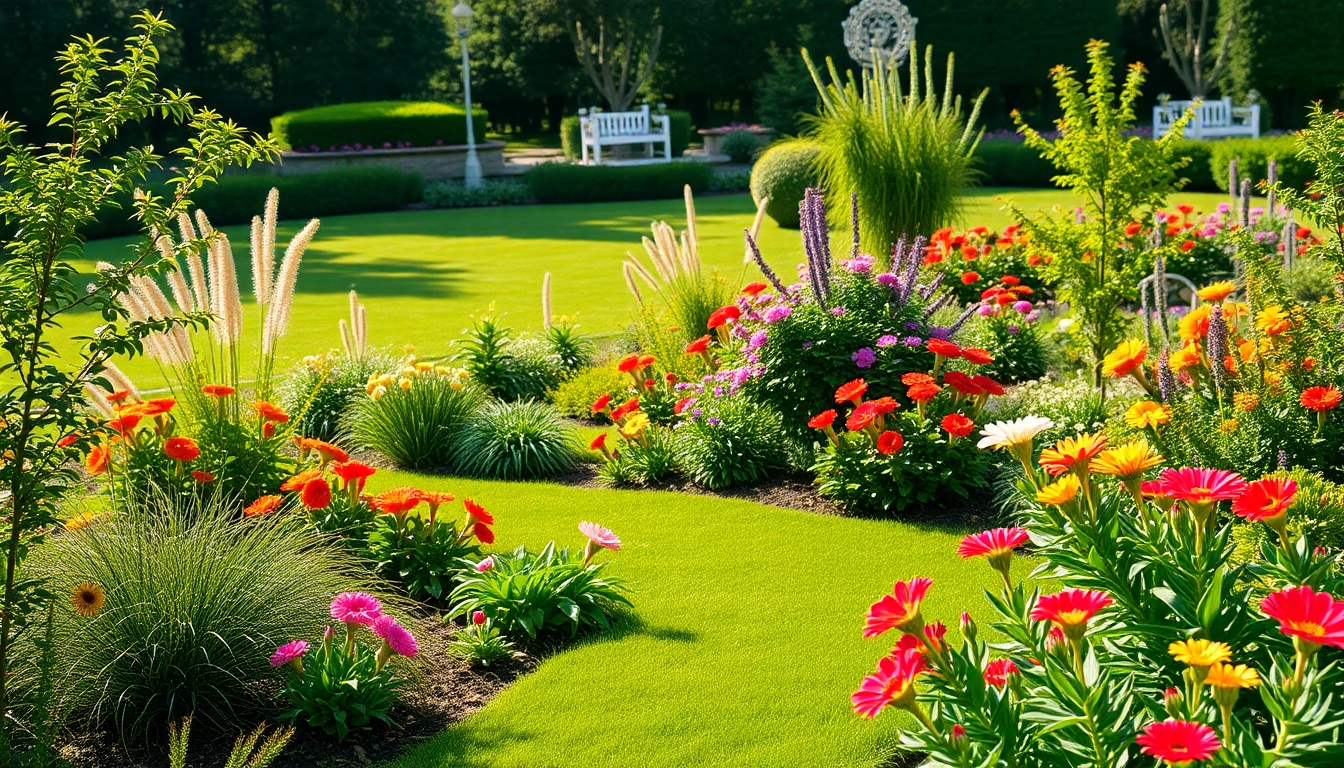1. Introduction to Landscaping Company Pricing
When considering enhancing the beauty and functionality of your outdoor space, understanding landscaping company pricing becomes essential. Landscaping is not just about aesthetics; it’s an investment into the long-term value of your property. Yet, navigating through various pricing structures can be daunting. This article delves into the factors influencing landscaping costs, pricing models utilized by companies, and the importance of budgeting for your landscaping projects.
What Factors Influence Landscaping Costs?
The costs associated with landscaping can vary significantly based on a multitude of factors. Understanding these can help you make informed decisions. Some key factors include:
- Design Complexity: More intricate designs require more labor and input, translating to higher costs.
- Project Size: Larger projects typically come with higher overall costs, although some prices can scale down due to efficiencies.
- Material Quality: The quality and type of materials used (e.g., soil, plants, hardscaping elements) directly affects the final price.
- Labor Costs: Different regions and companies may charge varying labor rates depending on demand and expertise.
- Seasonal Availability: Some plants or materials may be cheaper during specific seasons, influencing overall costs.
Understanding Pricing Models in Landscaping
Landscaping companies may adopt different pricing models that can include:
- Hourly Rates: Commonly used for smaller projects or consultations, where clients pay for the time spent by landscaping professionals.
- Flat Fees: For well-defined projects, a flat fee can be agreed upon, providing certainty in budgeting.
- Cost-plus Pricing: Companies may charge a base cost plus a specified markup percentage; this is often seen in larger or more complex projects.
- Per Square Foot Pricing: Used mainly for projects like sod installation or grass seeding, where costs are based on area covered.
The Importance of Budgeting for Landscaping Projects
Budgeting for landscaping not only prepares you for the financial outlay but also helps prioritize needs versus wants, ensuring that you achieve the best results within your means. A solid budget reflects the project scope and includes allowances for potential overruns or unexpected costs, providing peace of mind throughout the process.
2. Average Landscaping Company Pricing Breakdown
Understanding the average costs associated with various landscaping services can help clarify what to expect in the market and assist you in your budgeting efforts.
Common Pricing Structures in Landscaping Services
The average costs often vary widely depending on the services rendered. Here are some common pricing structures in landscaping services:
- Lawn Care and Maintenance: Routine lawn maintenance ranges from $50 to $150 per visit, depending on the yard size and required services.
- Plant Installation: Plant costs can range from $3 for annuals to upwards of $150 for mature trees, not including labor.
- Patios and Walkways: Installing a patio can cost between $15 to $50 per square foot, influenced by materials such as pavers or concrete.
- Irrigation Systems: Installation might cost anywhere between $1,500 and $3,000, depending on the yard size and complexity.
Cost Estimates for Popular Landscaping Projects
Here’s a closer look at some popular landscaping projects and their estimated costs:
- Sod Installation: $0.50 to $2 per square foot.
- Deck Construction: $15 to $35 per square foot, varying with material choice and design.
- Water Feature Installation: Ranges from $1,000 to $10,000 based on size and complexity.
- Plant and Tree Installation: Between $50 to $500 per plant/tree, influenced heavily by size and species.
Hidden Costs in Landscaping: What to Watch For
When budgeting for landscaping, it’s critical to be aware of hidden costs that can arise:
- Permits and Fees: Some projects may require permits, adding to your overall costs.
- Site Preparation: Costs related to clearing land or improving soil quality can add up.
- Maintenance Costs: Consider the long-term costs associated with maintaining your landscaping, such as fertilizers and seasonal upkeep.
- Design Fees: If hiring a designer, there may be an additional fee on top of installation costs.
3. Custom vs. Standard Landscaping Solutions
Choosing between custom and standard landscaping solutions impacts both the design’s uniqueness and the overall cost. It’s essential to understand the implications of each option.
Comparing Costs: Custom Designs vs. Pre-Designed Packages
Custom designs offer personalized solutions tailored to specific preferences, while pre-designed packages often come at a lower price:
- Custom Designs: These typically range from $200 to $2,000 for design fees alone, plus installation costs, making it a pricier option.
- Pre-Designed Packages: Generally cost between $1,000 to $3,000, these can provide well-balanced aesthetics with practical considerations.
How Customization Affects Landscaping Company Pricing
Customization tends to increase overall pricing due to:
- Increased Labor Costs: Custom projects require skilled labor and more time to realize your vision.
- Unique Materials: Sourcing specific plants or materials may come with a premium.
- Design Process Involvement: Customized designs may need extensive consultations, adding to labor hours.
Evaluating Your Needs for Customized Solutions
Before opting for a custom solution, assess your needs carefully:
- Budget: Ensure your budget can accommodate customization without compromising service quality.
- Longevity: Determine if the custom design offers lasting value against the higher upfront investment.
- Personal Taste: Identify your personal preferences and how they align with potential landscape designs.
4. Tips to Maximize Your Landscaping Budget
Maximizing your landscaping budget ensures that you get the most value out of your investment. Here are some actionable tips:
How to Choose Cost-Effective Materials
Materials can eat up a significant portion of your budget; consider the following to choose wisely:
- Local Sourcing: Seek materials sourced locally to reduce transportation costs.
- Durability: Invest in materials that last longer; while they may cost more upfront, they save money in the long run.
- Recycled Options: Utilize recycled materials where possible for eco-friendly and cost-effective alternatives.
Planning Your Project in Phases to Manage Costs
Dividing your landscaping project into phases helps manage your budget effectively:
- Prioritize Essential Elements: Tackle crucial landscape features first and leave optional items for later.
- Create a Timeline: Map out when each phase will be implemented based on seasonal considerations.
- Budget Accordingly: Allocate funds wisely by focusing on completing one phase before moving onto the next.
Negotiating with Landscaping Companies: What to Know
Negotiation can play a crucial role in securing favorable pricing:
- Understand Value: Be familiar with average pricing in your area to negotiate effectively.
- Multiple Quotes: Gather quotes from several companies to foster competitive offers.
- Be Flexible: If you can adjust timelines or be flexible with your requirements, you may leverage discounts.
5. Conclusion: Making Informed Landscaping Pricing Decisions
Ultimately, navigating landscaping company pricing successfully hinges on informed decision-making and thorough preparation.
Gathering Quotes from Different Landscaping Companies
Request detailed quotes to understand the breakdown of costs, including materials, labor, and timelines. Ensure the quotes reflect realistic deliveries and include all potential charges.
Assessing Value Beyond Just Pricing
Price isn’t everything; evaluate the quality of work, customer feedback, and the landscaping company’s credentials before making your final choice. Often, the lowest price doesn’t guarantee the best result.
Future Considerations and Ongoing Maintenance Costs
Consider the long-term commitments associated with your landscaping projects. Ongoing maintenance can contribute significantly to your overall expenditure. Establish a maintenance plan that aligns with your initial design to ensure your landscaping investments thrive long term.








